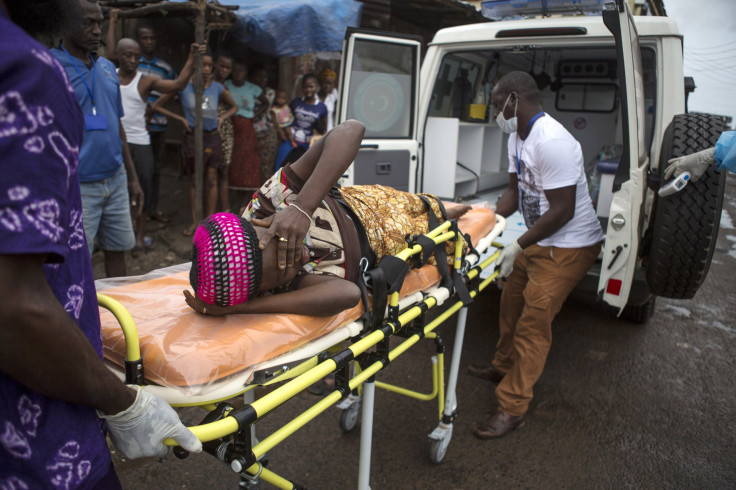Ebola: Sierra Leone Puts A Million People Under Quarantine As Situation Deteriorates

Following a three-day country-wide quarantine that ended last week, Sierra Leone has placed three more districts with over a million people under indefinite quarantine, reports Reuters.
Five of the country's 14 districts covering almost a third of its population are now under restrictive orders.
Most of these regions house very poor communities and experts are worried about the implications of the quarantine.
The World Food Programme is meant to provide food to residents living there. But the British charity Street Child voiced concerns of mass starvation saying no warning had been given of the latest quarantine.
"We were not prepared for the quarantine overnight. The areas being quarantined are really poor communities, most people live on 50p a day," its country director, Kelfa Kargbo, told the Guardian.
"We need more help from the World Food Programme, but more than that we need a distribution network to be built to make sure the food gets in and gets in regularly to the starving people. I am expecting starvation to show in three or four weeks unless this is addressed."
Announcing the districts of Port Loko and Bombali in the north and Moyamba in the south would be quarantined, Sierra Leone's President Ernest Bai Koroma said: "The isolation of districts and chiefdoms will definitely pose great difficulties for our people in those districts. But the life of everyone and the survival of our country take precedence over these difficulties."
People will be able to travel through quarantined districts during daylight hours so long as they do not stop.
The World Health Organization concurred with the government concern and noted that the situation in Sierra Leone continues to deteriorate.
The death toll in the country has been put at 597 and the number of Ebola cases at 1,940, nearly a third of the total for the three West African countries.
Lack of facilities and awareness continues to contribute to the spread of the virus. In the majormining hub of Makeni, Al Jazeera reports pathetic conditions at the "holding centres".
Patients crowded into abandoned university compounds, nurses working without essential protective gear, sick women and children lying on floors reeking of vomit, urine and chlorine, all contribute to making the Ebola bomb tick faster.
"There are simply not enough Ebola centres, the epidemic is moving... Patients arrive at the level of district hospitals in towns which cannot treat them. They are overwhelmed," said Axelle Vandoornick, field coordinator for the Doctors Without Borders (MSF) Ebola case management centre in Kailahun.
Going out of control
MSF, which has a capacity of 80 beds, has taken in 52 patients from Makeni since August, and 28 over the past week, overriding its policy of not taking patients from outside their own district.
"The situation is out of our control," Dr Osman Mohamad Bah, director of Makeni Regional Hospital, said. "We have seen more than 100-150 cases in the last four weeks."
He said 99% of the cases tested from the city with a population of 112,000 had returned positive.
According to WHO, Liberia had 315 bed spaces for Ebola patients and aid agencies had promised to set up 440 more, but the country needs a further 1,550.
In Sierra Leone, 297 planned new beds would double existing capacity but a further 532 are needed.
The first 9,000 of a planned 50,000 kits -- containing protective gowns, gloves and masks for family members to look after Ebola sufferers – have arrived in Liberia.
In a glimmer of hope, WHO has announced that the spread of the disease in Guinea appeared to have stabilised.
While the virus has infected over 6,000 people and killed almost half the numbers, experts warn that the number of cases recorded remains a fraction of the actual total, with many victims unable or unwilling to come forward for treatment.
WHO has warned the total number of infections could reach 20,000 by November.
The US Centers for Disease Control and Prevention (CDC) has warned between 550,000 and 1.4 million people might be infected in the region by January if nothing was done.




















